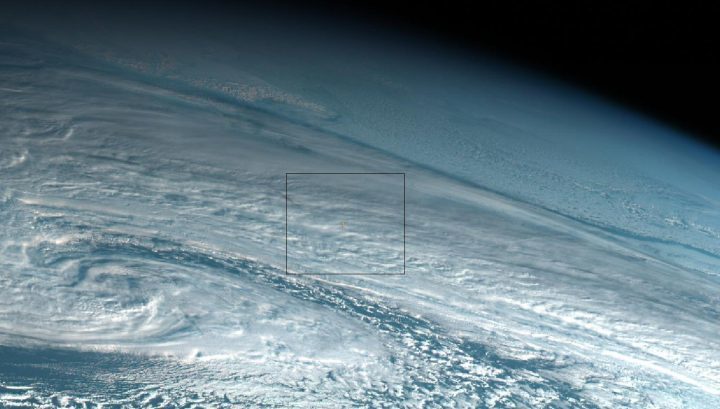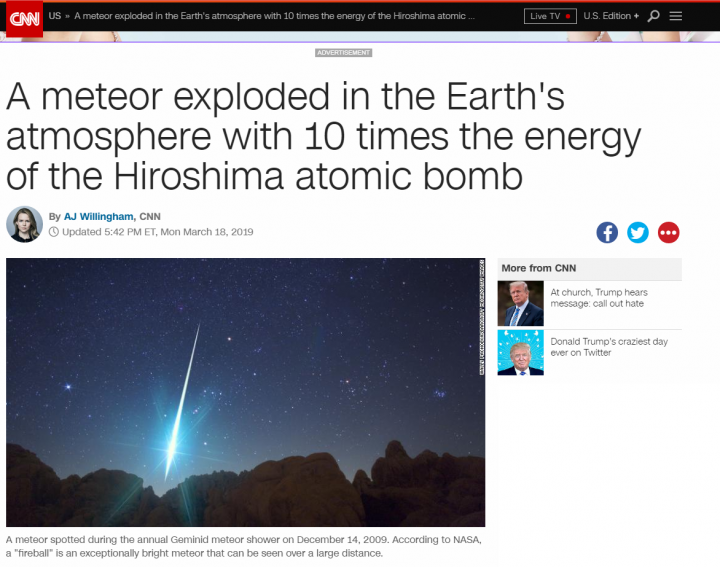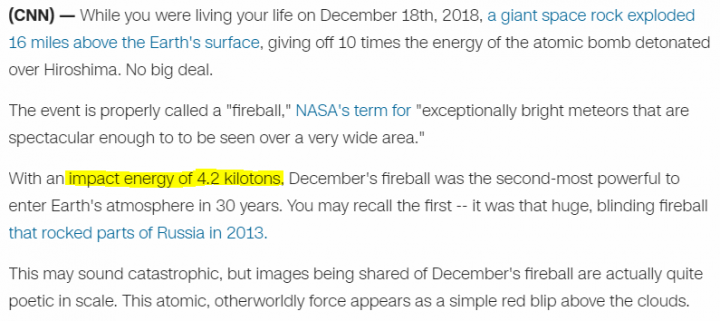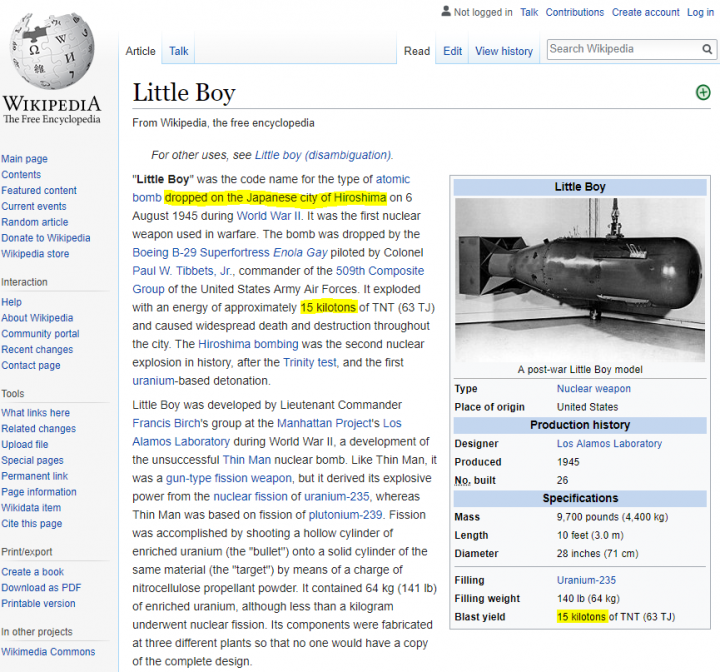Here's the headline:
And here is the text of the report, note the highlight:
Umm, riiight. I didn't even have to look it up to know that the Hiroshima bomb (Little Boy) had a 15 kiloton yield, but it's right there in Wikipedia had the author bothered to check facts first.
Let's see, a 4.2 kiloton meteor explosion in the atmosphere, vs. the 15 kiloton Hiroshima bomb.
For the math challenged, like CNN writer AJ Willingham here's how that works out:
15 kilotons/4.2kilotons = 3.57 times SMALLER than the Hiroshima Bomb.
Yet somehow, CNN thinks the meteor was 10 times stronger, or with a yield of 15 kilotons x 10=150 kilotons. Nope, not no way, not no how.
CNN > FAIL.
Meanwhile, here's a photo of the event, notice the tiny orange blip in the clouds inside the box:

UPDATE: CNN finally got around to updating the story and noting a correction at 1:58 AM ET, Tue March 19, 2019 :
Correction: This story has been updated to reflect that the fireball had an impact energy of 173 kilotons.






Comment: The Guardian managed to get it right the first time: HUGE meteor exploded over Russia's Far East in December last year - Blast was 10 times more powerful than Hiroshima